Naturally Decorated Easter Eggs
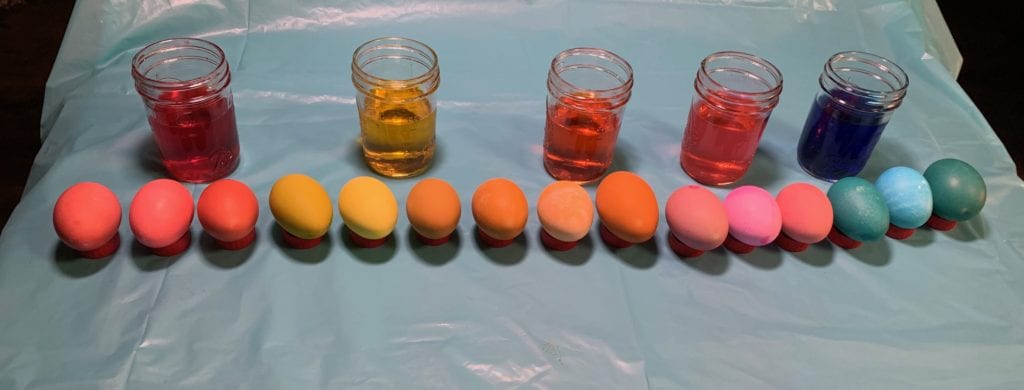
Decorating Easter eggs is a family tradition, we experimented with our farm fresh eggs this year and the results were beautiful.
Easter eggs, in our house, had always started off as the white eggs we would buy at the store. But as our diverse flock (Rhode Island Red, Barred Rock, Buff Oprington, Black Australorp, Silver Laced Wyandotte and Americauna) provided such a wide variety of eggs with pretty natural colors, it was hard to imagine dying them in the traditional way.
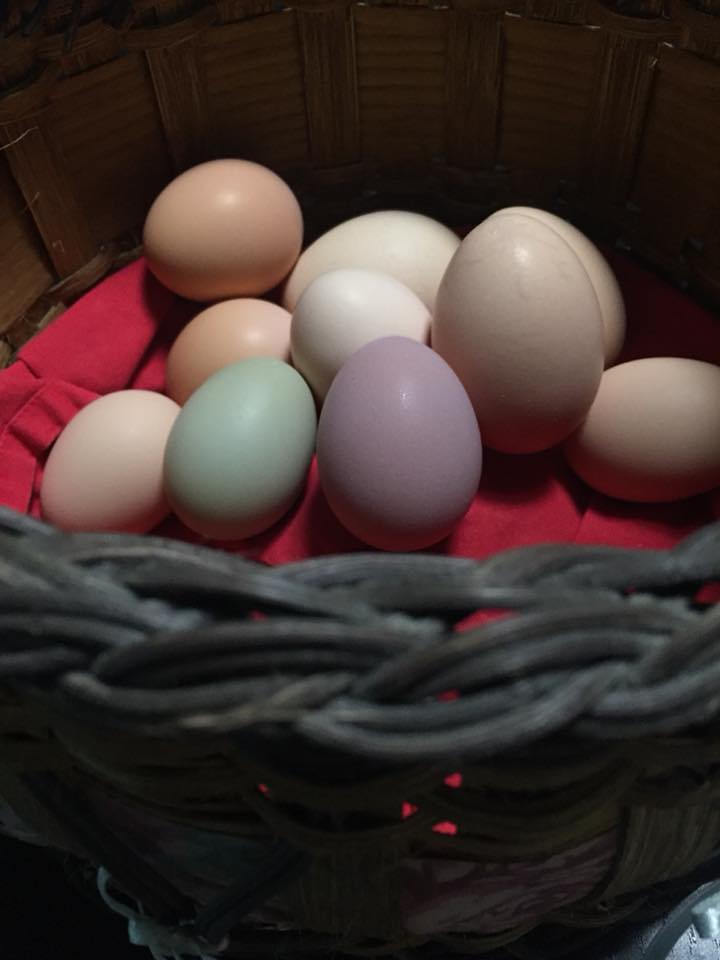
Last year we shared a picture on social media of our chicken eggs in a basket. The responses included questions as to whether we had already dyed the eggs. “Why in the world would you want to tinker with naturally decorated Easter eggs?” some questioned. So, this year, we egg-sperimented with decorating for Easter and the results were beautiful.
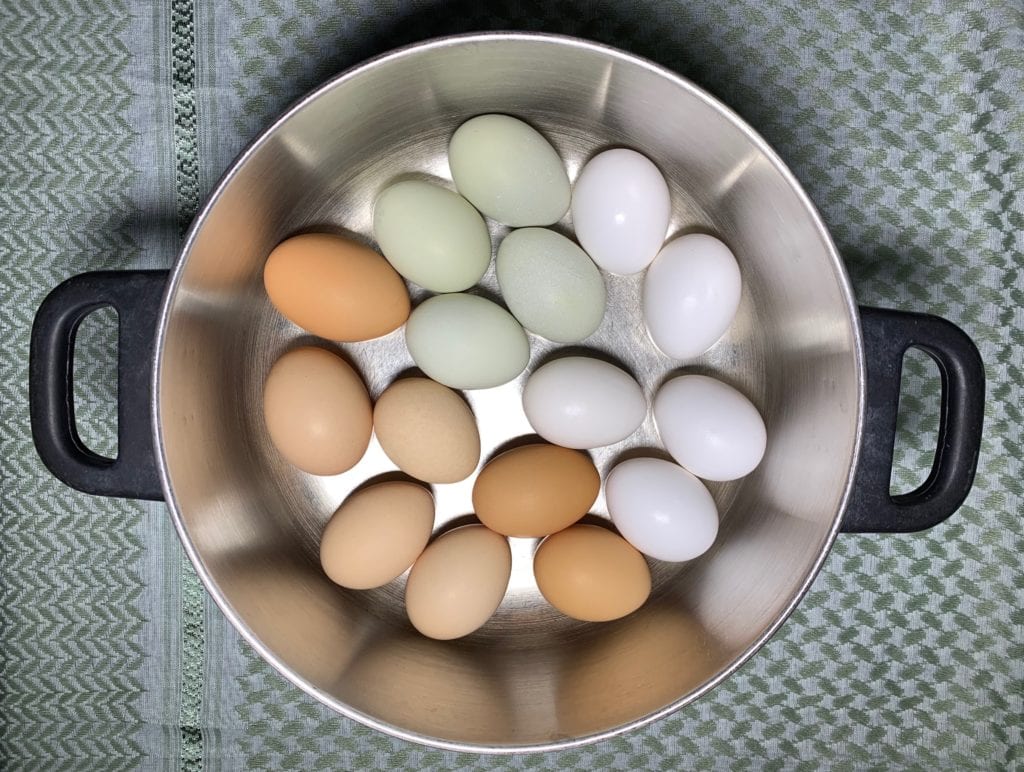
We headed to our neighborhood Kroger, bought a dozen of their large eggs and collected another 3 dozen of our mixed eggs. In the pot, the white eggs really stood out from the blue-green Ameraucana eggs and the multiple shades of brown and brownish-purple from our other chickens (and you have to see what they look like on the inside, we egg-sperimented with that too).
Here’s what we did:
We used an inexpensive Paas dying kit we picked up at the store that came with 5 colors; red, yellow, orange, pink and blue. It was fascinating to see just how different each of the eggs looked when soaked in the same color for 5 minutes.
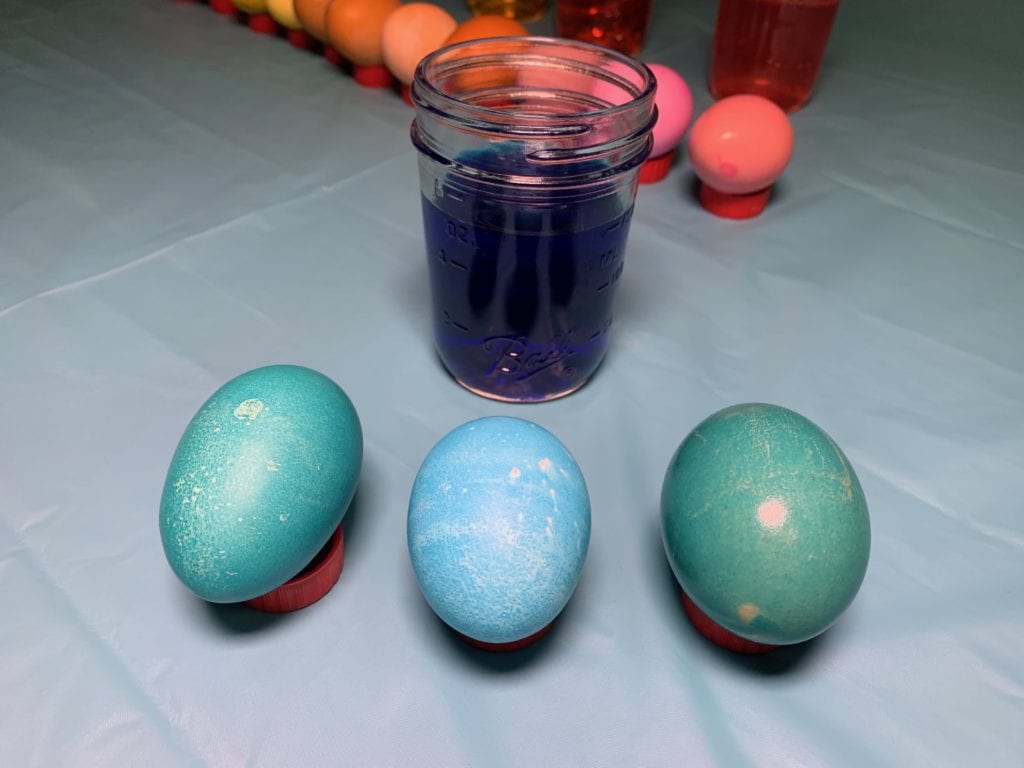
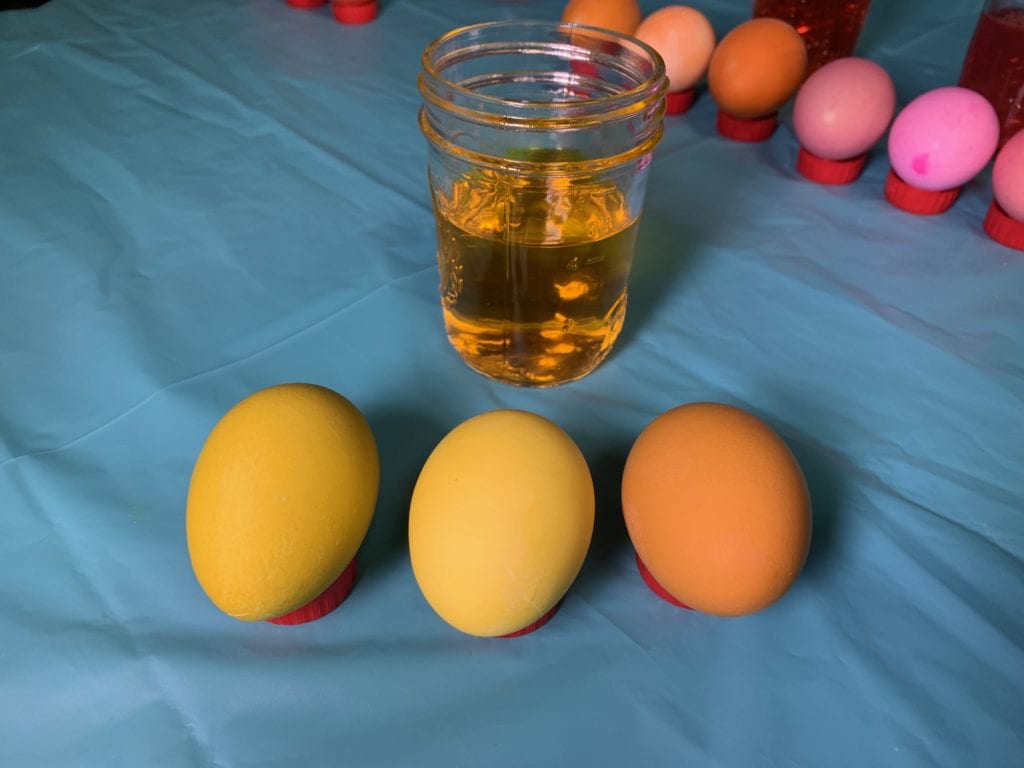
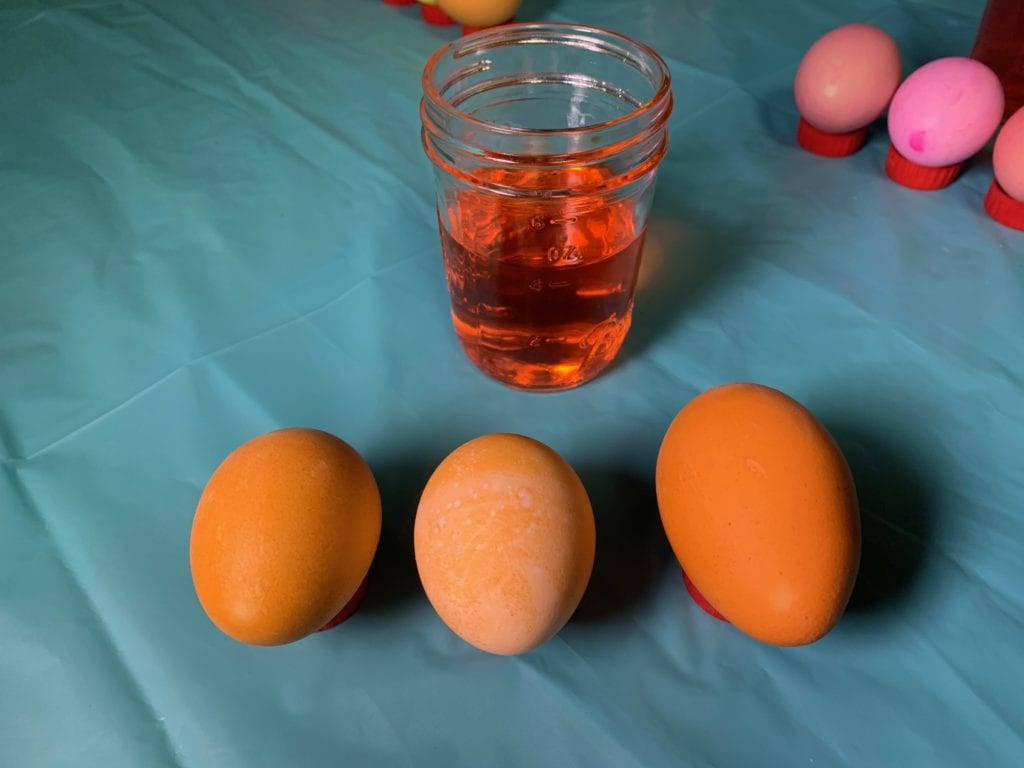
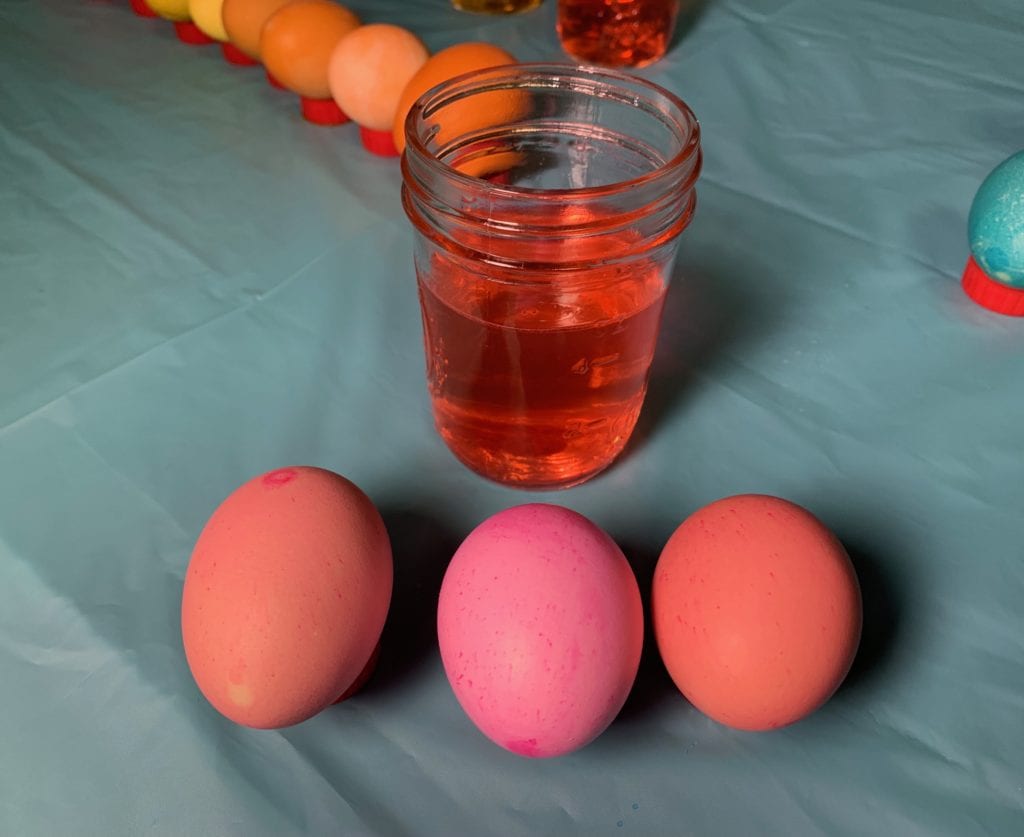
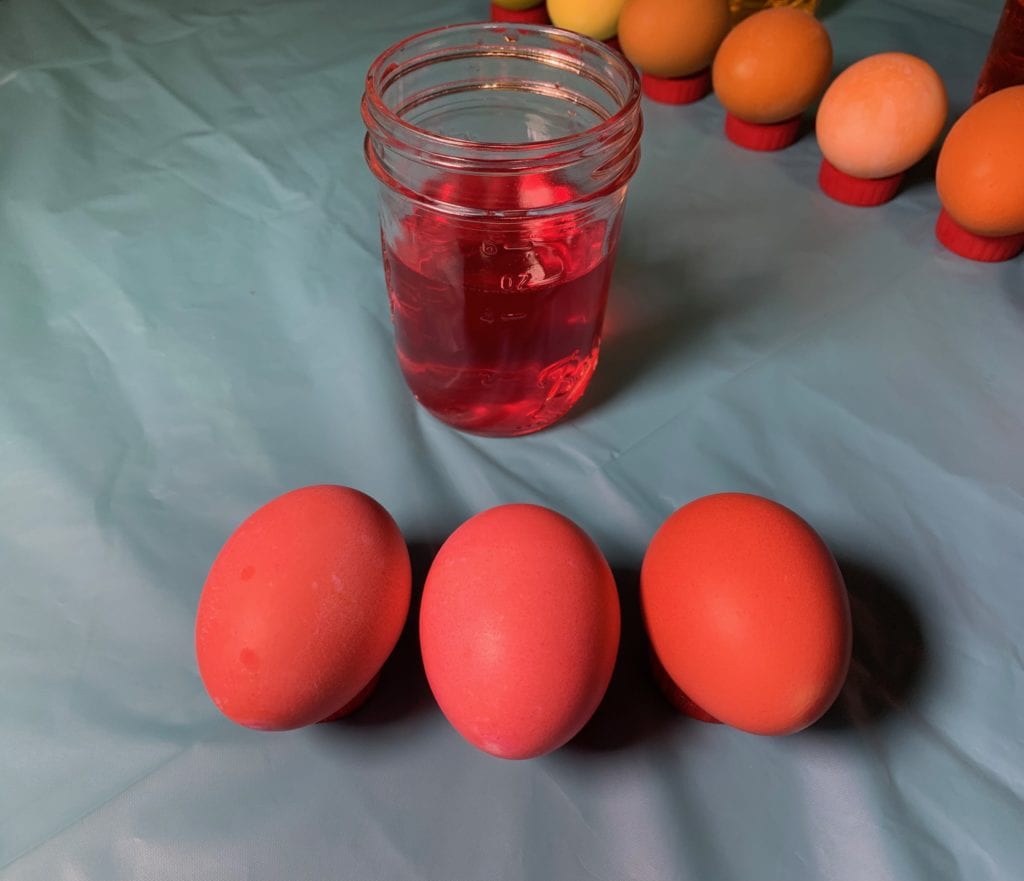
You have to try this for yourself.
The egg-speriment was a blast, but it’s hard to not want to keep our farm fresh eggs just the way they are at Easter. We encourage you to find a local farmer, farm market or use your own chicken’s eggs to try this for yourself.